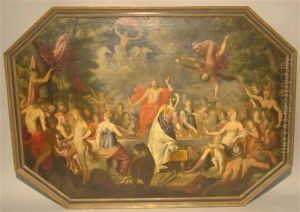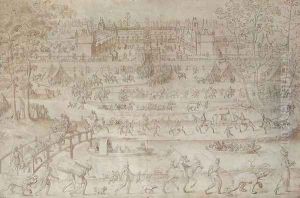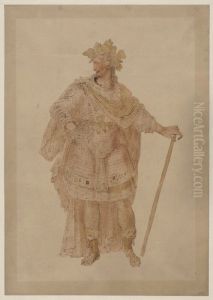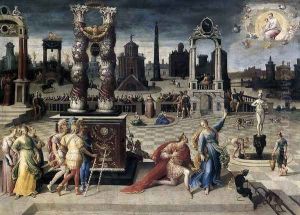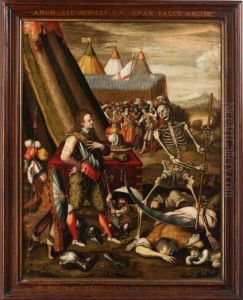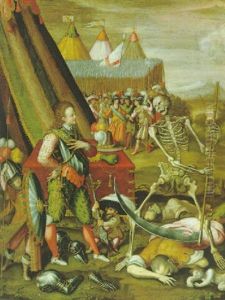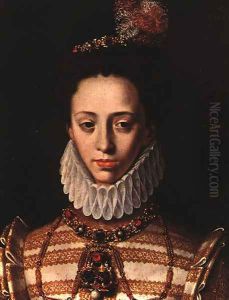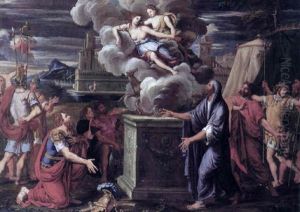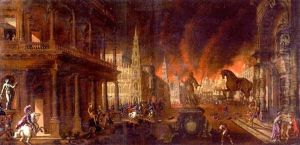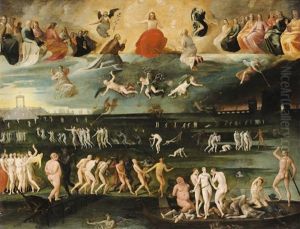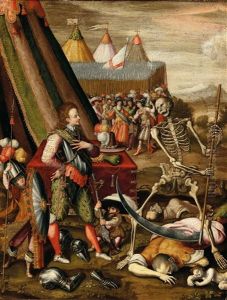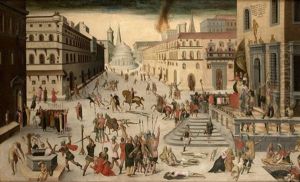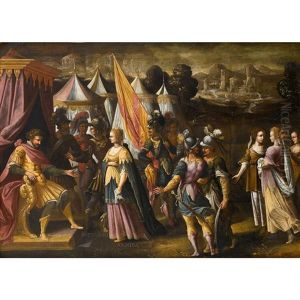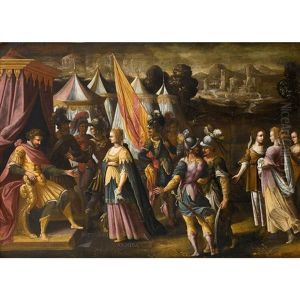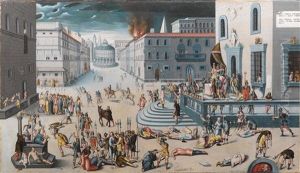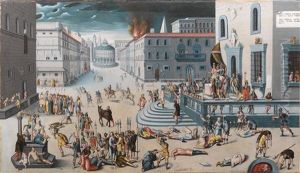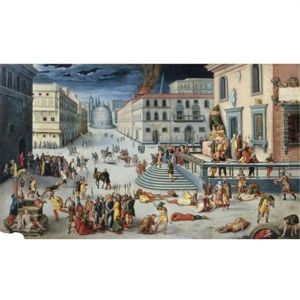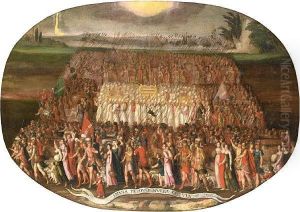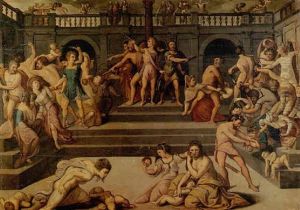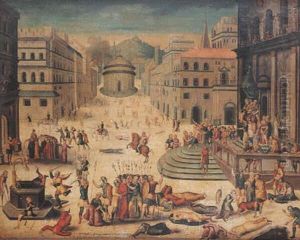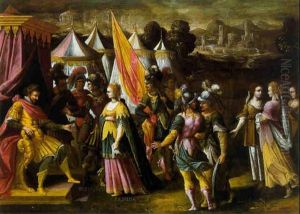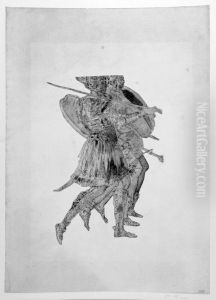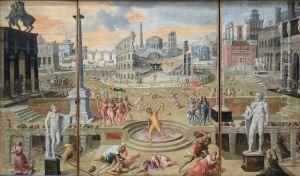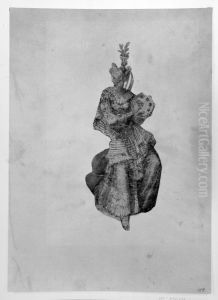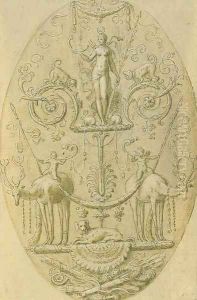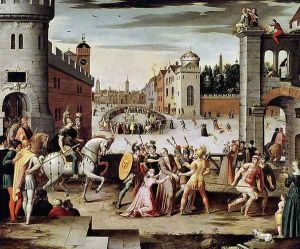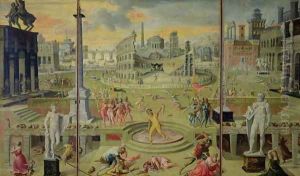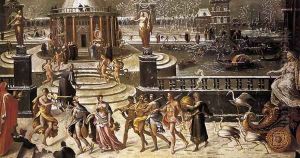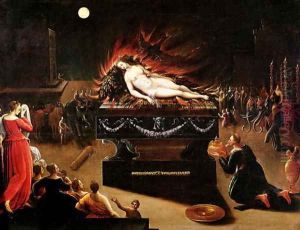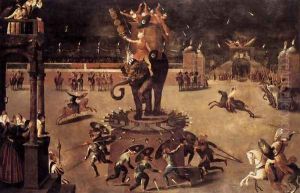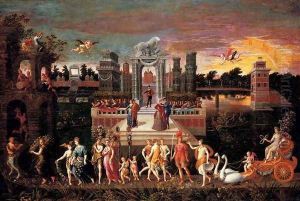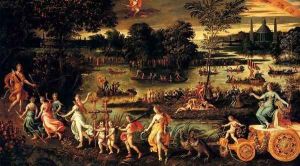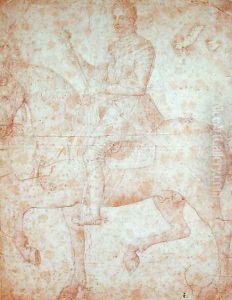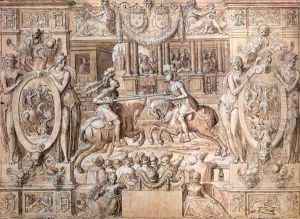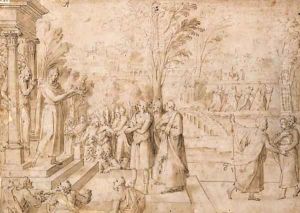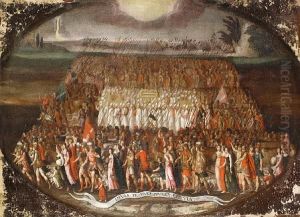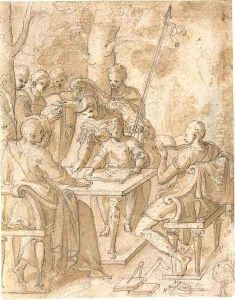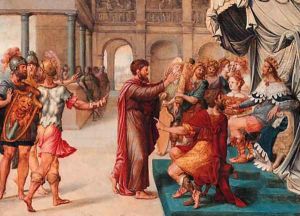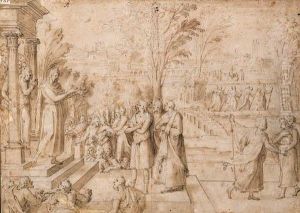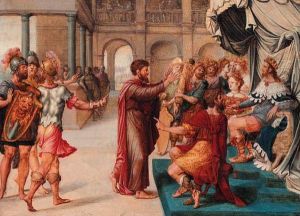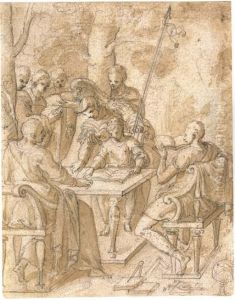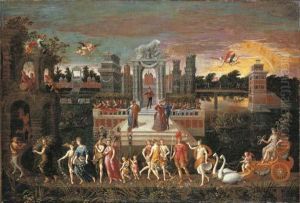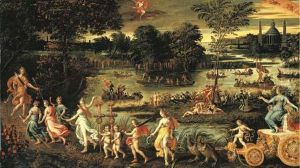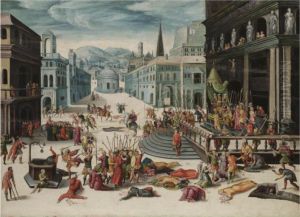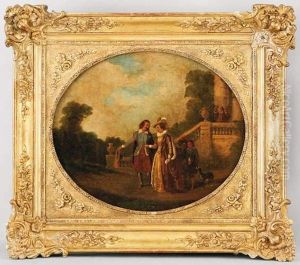Antoine Caron Paintings
Antoine Caron was a French master glassmaker, illustrator, and Mannerist painter, who played a notable role in the French Renaissance. Born in 1521 in Beauvais, Oise, Caron is best known for his work as a court painter to the Valois dynasty, particularly under the patronage of Catherine de' Medici. He was influenced by the Italian Mannerist style, which was characterized by artificiality, grace, and elegance. Caron's work often depicted grand and complex scenes, combining both real and mythological elements.
During his early years, Caron likely received his artistic training in his hometown before moving to Paris, where he became a master glassmaker. His skills in glass painting and design were highly sought after, and he was involved in the creation of stained glass windows for various churches.
Caron's career as a court painter began in earnest in the 1560s. He became a favorite of the French court, executing large-scale paintings that often celebrated or commemorated events in the lives of his patrons. His works during this period included the depiction of royal festivities, battles, and other significant events. One of his most famous works is 'The Triumph of Winter,' which is part of a series of paintings representing the seasons, made for Catherine de' Medici.
In addition to his role as a court painter, Caron also produced a number of drawings that have been highly praised for their detail and vigor. These drawings served as designs for tapestries, which were a major form of artistic expression during the Renaissance.
Caron's style evolved over his career, displaying an increasing complexity in composition and a vibrant use of color. His later works are considered to be some of the most significant examples of late French Mannerism.
Antoine Caron passed away in 1599, leaving behind a legacy as one of the most important French artists of his time. His work continues to be studied and admired for its intricate detail, historical value, and the unique blend of real and fantastical elements that characterize the Mannerist style.
